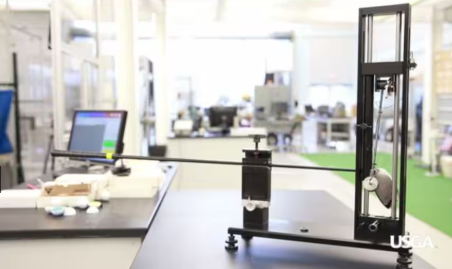SENIORS TAKE THE STAGE AT COLORADO SENIOR OPEN IN AUGUST
What to know about this year’s Colorado Senior Open
By Tony Dear
This week’s title might be a little misleading because, in all honesty, you probably don’t need to know anything about CT Creep.

Unless you practice with your driver for hours every day and have a clubhead speed of 120mph or more, It likely won’t affect you. You could purchase a driver, play hundreds of rounds with it, and retire it after three years’ (say) of service without ever coming across the term or having the faintest idea what it means.
We’ve mentioned it a couple of times on this page, actually, so you might have been familiar with the words prior to the PGA Championship and hearing about Rory McIlroy and Scottie Scheffler’s drivers falling foul of the rules.
But it never hurts to have all the facts…you know, just in case something unexpected comes up.
What is CT, then?
CT stands for ‘Characteristic Time’ – a measurement that indicates a driver face’s ‘springiness’. The more springy the clubface (the more it flexes at impact), the more energy it imparts on the ball at impact. The more energy imparted, the higher the ballspeed, and the more likely it is to travel farther.
The limit for CT, set by the USGA and R&A, is 239 microseconds (one microsecond is one millionth of a second) with a tolerance of 18 microseconds, for a total of 257 microseconds. There’s a permitted tolerance because some CT testing machines might be calibrated very slightly differently, and we’re talking about a very brief moment in time – a human blink lasts about 350,000 microseconds, meaning the CT of a typical driver face is roughly 0.07% of the time it takes to complete a blink.
How is it tested?
A CT testing machine has a small steel ball attached to a pendulum. The pendulum is released and the steel ball strikes the driver face. Sensors measure how long the two objects are in contact.

What is CT Creep?
Over time and if used regularly, an already thin driver face might become even thinner if hit by an elite golfer with high clubhead speed
Who tests it?
Driver testing happens regularly on the PGA Tour, and the PGA of America requested USGA officials conduct tests on about a third of the field before the championship last week. Both McIlroy’s and Scheffler’s drivers were found to be illegal. Scheffler said he wasn’t too surprised with the result as he had been using his driver for over a year, so felt that it was coming. He also called for more regular testing. “I think, if we’re going to do it, we might as well do it right,” he said. “Get more robust and get even more strict. You can test guys every week, if you want. I mean, there’s no reason why we shouldn’t.”
How much farther could someone like Rory McIlroy or Scottie Scheffler hit an illegal driver whose CT had crept over the legal limit and was now 260 microseconds, say, than they could a legal driver?
As Brandel Chamblee noted on Golf Channel, we’re probably talking about a distance measured in feet rather than yards.
So those who insinuated on social media that McIlroy had somehow c*****d by showing up at the PGA Championship with an illegal driver (it was tested on Tuesday – two days before the tournament began) were probably wrong?
Probably. Put it this way, do you think McIlroy was consciously attempting to make the face of his driver thinner and more flexible (thus raising its CT) to gain a foot or two more carry? Or that TaylorMade, which makes his driver, would knowingly let one of its star players arrive at a major championship (indeed, any tournament) with a non-conforming driver?
Should I get my driver tested?
If you compete in USGA qualifiers or other big tournaments, practice so often you hit around 4,000-5,000 drives a month (that’s a lot), and have a clubhead speed over 120mph, you could do worse than have it checked. But your club pro is not going to have a CT testing machine and nor are the big-box stores. Some manufacturers will, so you can send them a club you suspect might be over the limit. Just know the company probably doesn’t have a department for testing customers’ used drivers, and measuring your driver’s CT likely won’t be high on its priority list. So it might take a while.
Colorado AvidGolfer Magazine is the state’s leading resource for golf and the lifestyle that surrounds it, publishing eight issues annually and proudly delivering daily content via coloradoavidgolfer.com.
What to know about this year’s Colorado Senior Open
Help your game this summer at the Insiprato Colorado Open